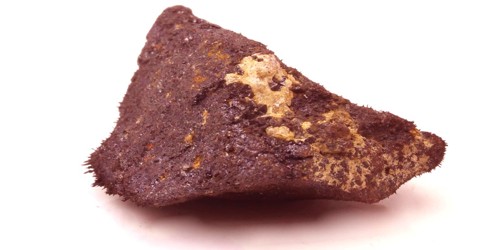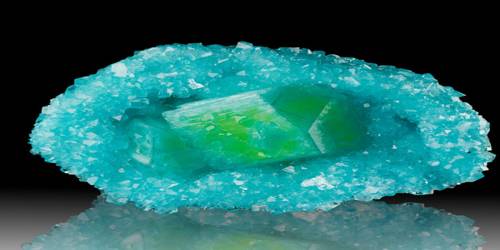A lodestone is a naturally magnetized piece of the mineral magnetite. It is a piece of magnetite that has magnetic properties and attracts iron or steel. They are naturally occurring magnets, which can attract iron. It is an extremely rare form of the mineral magnetite that occurs naturally as a permanent magnet.
The magnetism of the lodestone was scientifically investigated by William Gilbert in the sixteenth century, when he defined its ‘poles’ and the well‐known rule that ‘like poles repel, unlike attract’.
General Information:
- Chemistry: Fe3O4
- Class: Oxides and hydroxides
- Group: Spinel
- Color: Black to silvery gray
- Uses: Major ore of iron and as mineral specimens.

Physical Properties
The property of magnetism was first discovered in antiquity through lodestones. They are naturally occurring magnets, which attract pieces of iron. It is one of only a very few minerals that is found naturally magnetized. Magnetite is black or brownish-black, with a metallic luster, a Mohs hardness of 5.5–6.5 and a black streak.
- Chemical Classification: Oxide
- Streak: Black
- Luster: Metallic to submetallic
- Diaphaneity: Opaque
- Cleavage: None
- Mohs Hardness: 5 to 6.5
- Specific Gravity: 5.2
- Crystal System: Isometric.
Origin
The process by which lodestone is created has long been an open question in geology. Only a small amount of the magnetite on the Earth is found magnetized as lodestone. Ordinary magnetite is attracted to a magnetic field like iron and steel is, but it does not tend to become magnetized itself; it has too low a magnetic coercivity to stay magnetized for long.
The other question is how lodestones get magnetized. The Earth’s magnetic field at 0.5 gauss is too weak to magnetize a lodestone by itself. The leading theory is that lodestones are magnetized by the strong magnetic fields surrounding lightning bolts.
Information Source:
















